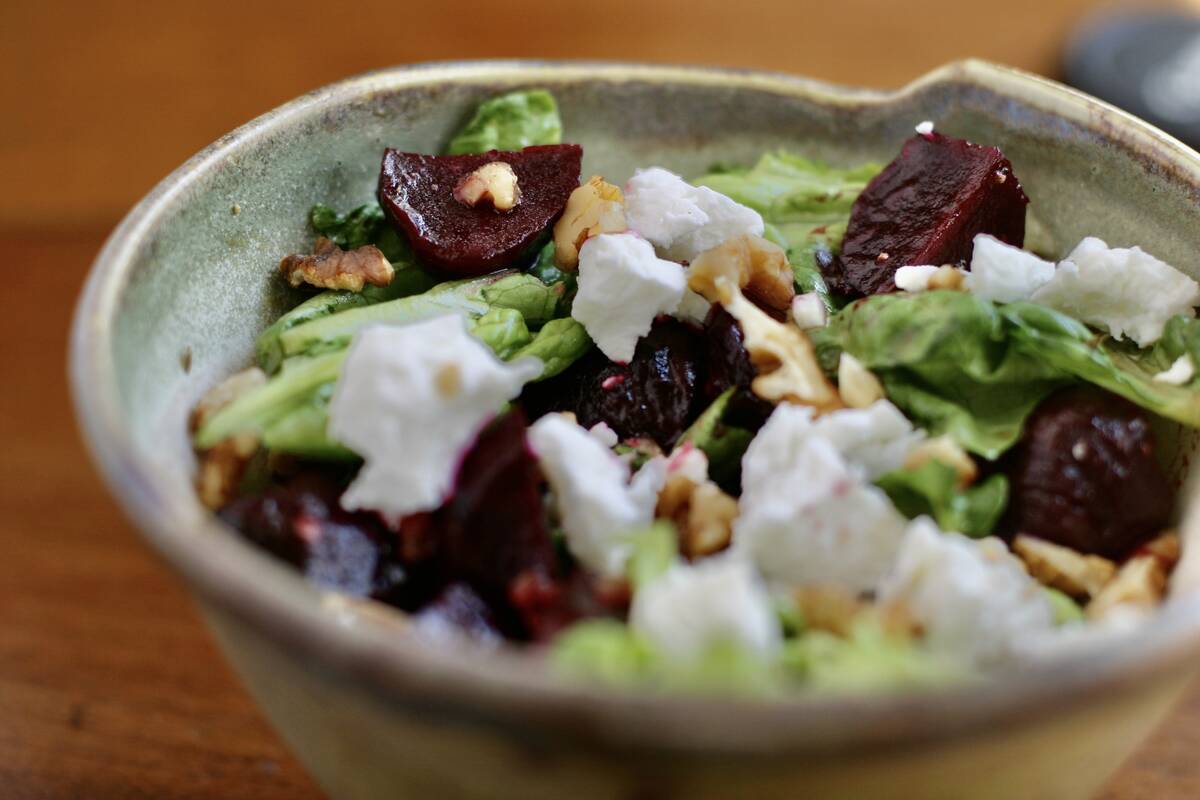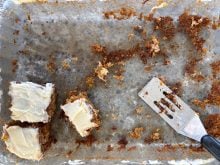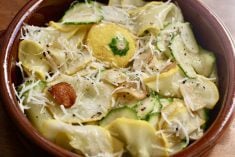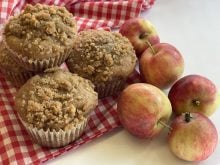I cannot help myself when loading up my basket at the farmers market because I love all the produce.
Knowing how to keep it at peak freshness avoids unnecessary waste. The following storage tips come from Canada’s Food Guide.
Most fresh vegetables and fruit will stay fresh longer if they’re stored unrinsed. Only rinse produce before preparing, freezing or eating it.
Read Also

Intergenerational rollover rules can help succession plans
One of the most significant concerns in succession planning for farmers is the tax bill that can come with passing the farm to the next generation.
Leafy greens are an exception. Rinse leafy greens before storing them. Wrap them in a towel and then in a reusable plastic bag.
Some vegetables and fruit should be stored at room temperature. These include bananas, potatoes, pineapple, sweet potatoes and onions, except green onions.
Store garlic in a cool, dry, well-ventilated place.
For long-term storage, a cold room is ideal for root vegetables, squash, cabbage and some varieties of apples. Remove the leafy tops before storage.
Some vegetables and fruit can be stored at room temperature until ripe and then should be moved to the refrigerator to prolong shelf life. These include kiwis, pears, plums, papayas, melons, mangoes, peaches, avocadoes, tomatoes, rutabaga and winter squash, such as acorn or butternut squash.
Store vegetables and fruit in separate crisper drawers. Vegetables go in the high humidity drawer, while fruit goes in the low humidity drawer.
Save vegetable trimmings and scraps in a freezer-safe bag. Freeze them until you have collected enough to make a vegetable stock.
Apricots with herbed goat cheese
- 3 oz. fresh goat cheese 85 g
- 1 tsp. basil pesto 5 mL
- 2 tsp. milk 10 mL
- 4 fresh apricots, sliced
- 1/8 tsp. salt .5 mL
- dash pepper
- 2 tbsp. balsamic glaze 30 mL
- fresh herbs, optional, for garnishing
Soften goat cheese at room temperature. Add pesto and milk and mix until evenly combined. Arrange apricot slices on a serving platter. Drop goat cheese mixture by teaspoonfuls over top. Sprinkle with salt and pepper and then drizzle with balsamic glaze. Garnish with fresh herbs. Serve immediately.
Balsamic glaze
- 1/4 c. balsamic vinegar 60 mL
- 1 tbsp. brown sugar 15 mL
Combine in a small saucepan and boil until volume is halved. This will burn easily, so keep a close watch. It will only take a few minutes. Remove from heat and cool. It is ready to use when cooled.
New potato salad with fennel and spring peas
- 1 1/2 lb. new potatoes 750 g
- 12 c. cold water, divided 3 L
- 7 tbsp. kosher salt, divided 105 mL
- 1 1/2 c. fresh peas, preferably freshly shelled 375 mL
- ice water
- 1/2 bulb fennel
- 2 green onions, sliced
- 1/3 c. red wine vinegar 75 mL
- 1/3 c. extra-virgin olive oil 75 mL
- 1 tsp. sugar 5 mL
- 1 tsp. kosher salt 5 mL
- 1/4 tsp. freshly ground black pepper 1 mL
Put six cups (1.5L) water, three tablespoons (45 mL) of salt and potatoes in a heavy-bottomed pot. Turn heat to high, partially cover and bring to a boil.
Meanwhile, blanch peas in six cups (1.5 mL) of water with three tablespoons (45 mL) of salt at a boil.
Prepare an ice bath with one tablespoon (15 mL) of salt. Add peas to the boiling water and cook until the water comes up to a boil again, two to three minutes. Taste peas to be sure they are fully cooked and then strain.
Place peas into the salted ice bath to stop cooking and set aside. Check potatoes periodically by piercing the largest one with a fork. They are done when the fork goes all the way through with no resistance. Turn off the heat and let the potatoes sit in their water for four or five minutes longer.
While potatoes are cooking, prepare the vinaigrette by adding vinegar, olive oil, sugar, salt and pepper to a small saucepan over medium-low heat. Bring to a simmer to dissolve and incorporate all of the ingredients.
Remove from heat and set aside. Meanwhile, prepare the fennel by removing the fronds and reserving them for later use. Use a mandoline to slice the fennel bulb into thin strips.
To assemble, drain the peas and fully cooked potatoes. Cut the potatoes in halves or quarters and add directly to the vinaigrette while they are still warm. Also add the sliced fennel and green onions. Toss so the vinaigrette is absorbed.
Roughly chop the fennel fronds and add to the salad. At the last minute, to avoid discoloration, add the peas. Toss again and serve.
Beet salad with goat cheese
- 4 medium size beets
- 2 tbsp. canola or olive oil 30 mL
- salt and pepper
- 2 tbsp. maple syrup 30 mL
- 1 tbsp. Dijon mustard 15 mL
- 1 clove of garlic minced
- 2 tbsp. balsamic vinegar 30 mL
- 1/4 c. canola or olive oil 60 mL
- 1/2 tsp. kosher salt 2 mL
- 1/4 tsp. black pepper 1 mL
- 1 small shallot, chopped
- 6 c. mixed tender greens 1.5 L
- 1/2 c. walnuts, toasted and chopped 125 mL
- 4 oz. goat cheese, crumbled 115 g
Beets can be roasted in advance and refrigerated until use. This may make better use of the oven if you are using it for something else. If your jar of mustard is almost empty, use it to mix up the salad dressing.
Start by roasting the beets. Preheat the oven to 400 F (200 C).
Rub beets with a little oil and place in a pan and bake for 25 to 30 minutes or until they are easily pierced with the tip of a knife.
While the beets are roasting, place walnuts in a small pan and toast them in the oven at the same time. Remove walnuts when toasted and chop. Set aside.
Remove the beets from the oven when they are done and let them cool for 10 minutes on the kitchen counter. Gently remove the skins and cut them into wedges.
Make the dressing by placing the maple syrup, Dijon mustard, garlic, balsamic vinegar, olive oil, salt and pepper in a mason jar. Put the lid on and give it a vigorous shake to combine.
Assemble the salad by placing the salad greens and the chopped shallot into a large salad bowl. Drizzle it with the dressing and gently toss to ensure all salad greens are evenly coated with the vinaigrette.
Dress cooked beets with dressing separately and add after the lettuce has been placed in the serving bowl.
Top with crumbled goat cheese and walnuts and serve.
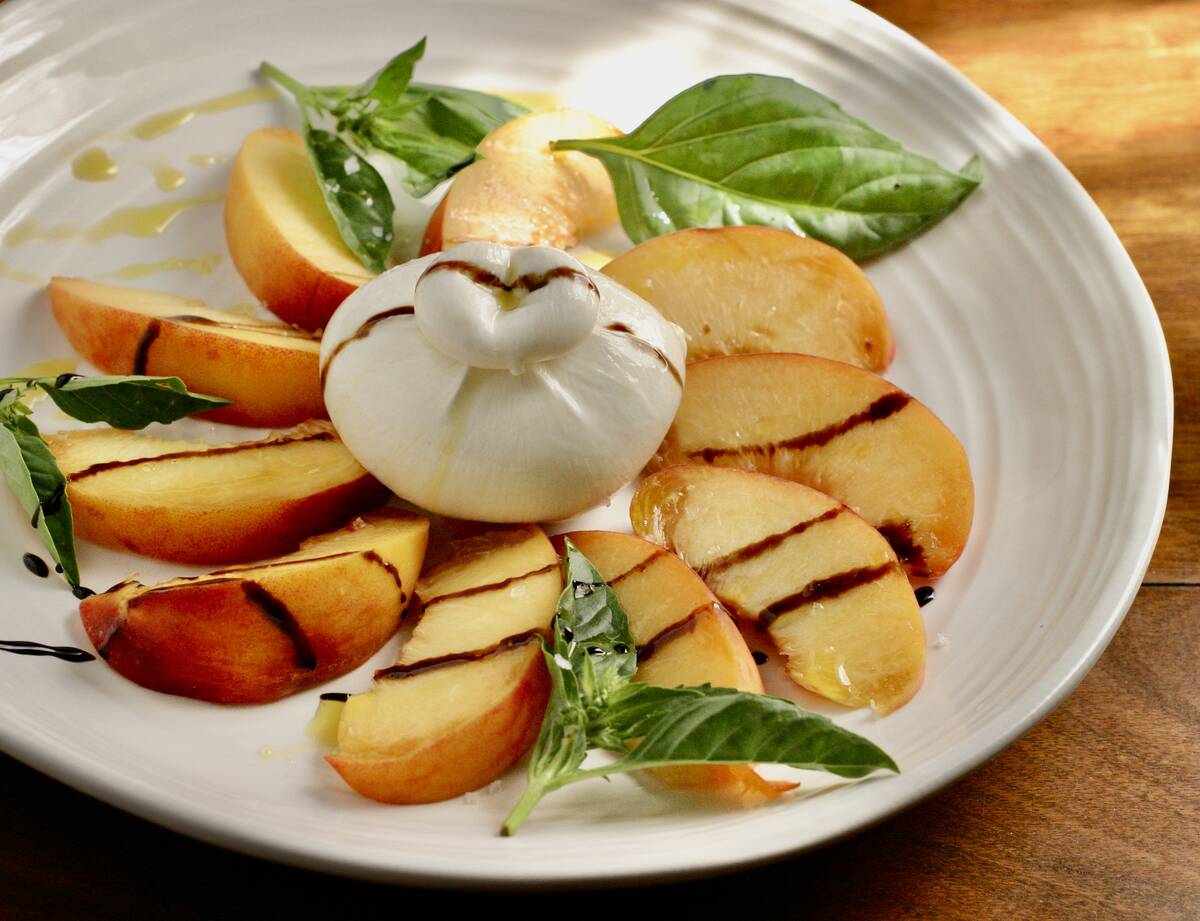
Peach and burrata caprese salad
- 2-3 medium to large ripe peaches, sliced
- 1/2 lemon
- 1 8 oz. ball of burrata, served whole, or torn apart over sliced peaches 250 g
- 1 small bundle of basil, around 10-12 leaves
- flakey salt and black pepper
- 1 to 2 tbsp. extra- virgin olive oil 15-30 mL
- drizzle of balsamic vinegar or glaze, to finish , optional
Prepare a small bowl of cold water with juice from half a lemon squeezed into it. Wash peaches. Cut them in half, and core out the pit, and then cut into quarters and each quarter into slices. Place in the water for a few minutes. The lemon juice will prevent the sliced peaches from browning.
Remove peach slices from water and dry on a paper towel. Arrange on a serving platter. Add burrata to the platter, either as a ball or tear it apart around the peaches. Garnish with fresh basil leaves.
Drizzle with olive oil, balsamic vinegar or balsamic glaze. Season with flakey sea salt and black pepper. Serve as a salad or on a cheese board.
Sarah Galvin is a home economist, teacher and avid supporter of local food producers. She has been a market vendor, grew up on a farm in southeastern Saskatchewan and is a member of TEAM Resources.


